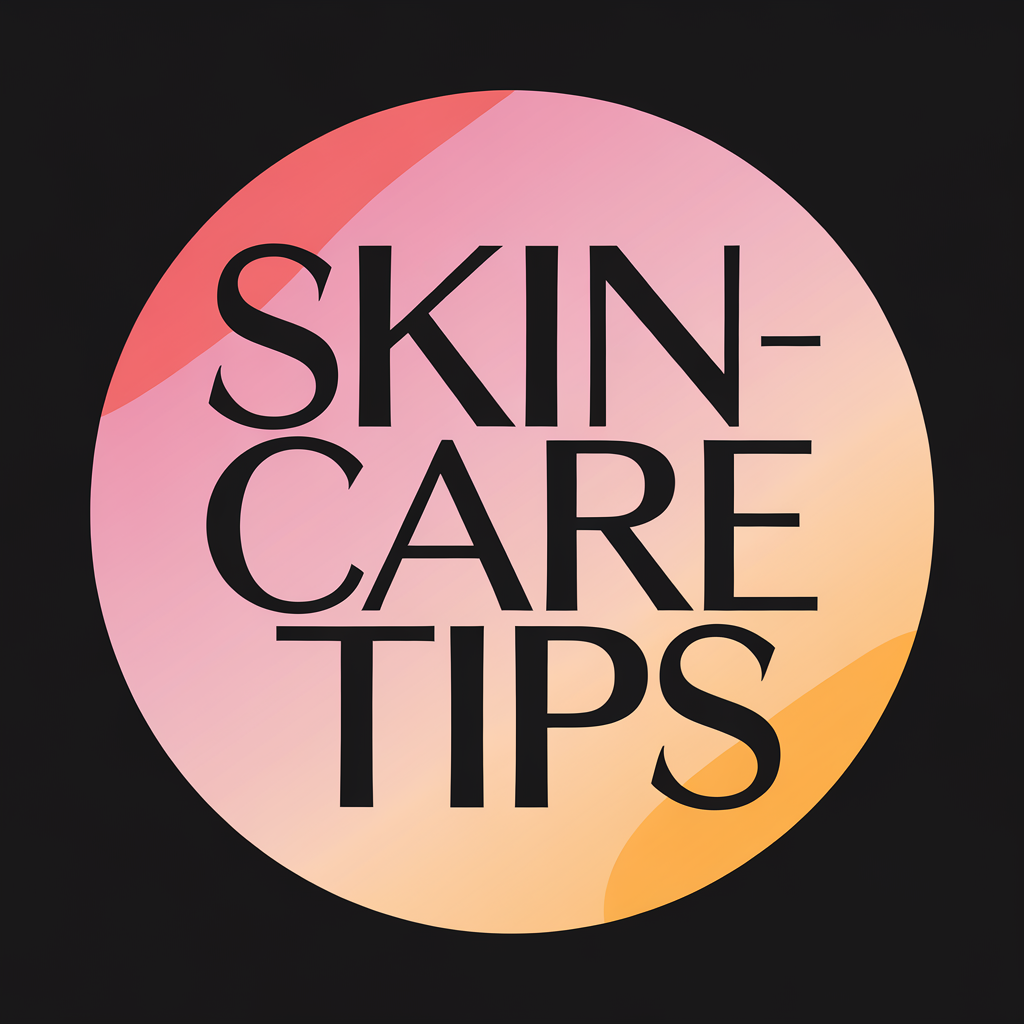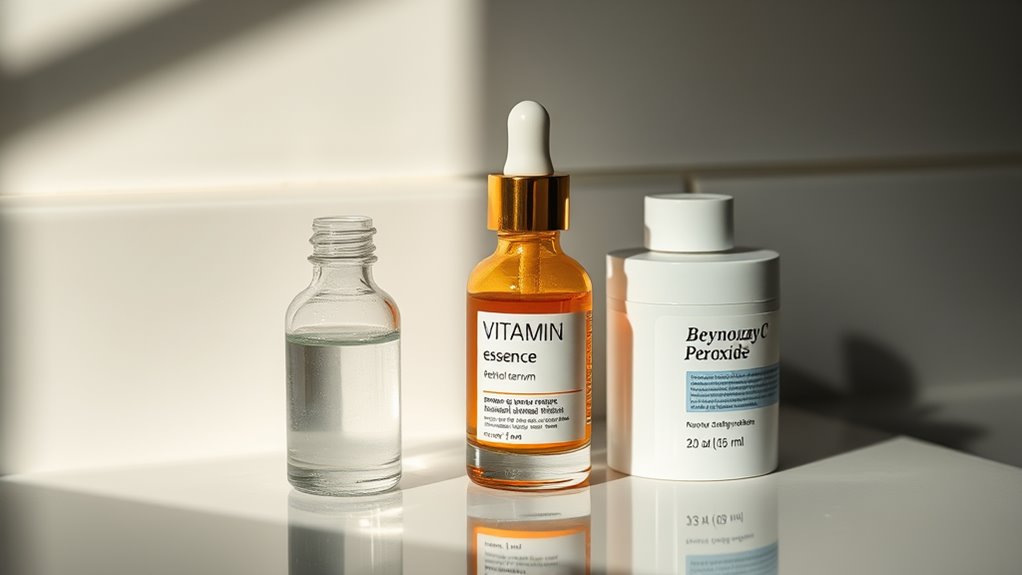Skincare Ingredients You Should Never Mix (And Why)
Just like the ancient alchemists’ risky brews, you’ve probably mixed skincare ingredients without a second thought. Don’t let your routine backfire—certain combos can wreak havoc on your skin. You’ll need to know which ones to avoid next.
Key Takeaways
- Avoid mixing retinol with AHAs, as they increase irritation and skin barrier damage.
- Do not combine glycolic acid and salicylic acid, which can cause excessive dryness and inflammation.
- Steer clear of essential oils and retinoids, as they heighten sensitivity and reduce efficacy.
- Never mix Vitamin C with benzoyl peroxide, as it leads to oxidation and increased irritation.
- Avoid pairing niacinamide with low-pH acids, which destabilize it and cause skin barrier disruption.
Retinol and AHAs
Have you ever wondered why mixing retinol and AHAs can irritate your skin?
These are prime ingredients not to mix, as both accelerate cell turnover and strip your skin’s protective barrier, leading to heightened sensitivity.
Retinol boosts collagen but increases vulnerability to inflammation, while AHAs like glycolic acid aggressively exfoliate, exacerbating the issue.
Evidence from dermatological studies shows this combination raises risks of redness, peeling, and damage.
Don’t ignore these warnings; you’ll compromise your skin’s health if you layer them.
Instead, apply on alternate days, patch test first, and consult experts for safer routines.
Furthermore, this combination can lead to adverse reactions that may worsen skin barrier disruption and prolong recovery time.
Vitamin C and Benzoyl Peroxide
Why mix Vitamin C and Benzoyl Peroxide when it destabilizes your skincare routine? This duo reacts chemically, oxidizing Vitamin C and slashing its antioxidant benefits, while Benzoyl Peroxide’s instability amplifies irritation and free radical damage—backed by studies in the Journal of Investigative Dermatology.
In contrast, retinol can be a stable alternative for addressing similar skin concerns like aging.
| Aspect | Risk with Mixing | Evidence-Based Advice |
|---|---|---|
| Stability | Vitamin C degrades | Apply products separately |
| Efficacy | Reduced antioxidant effects | Use in different routines |
| Skin Reaction | Increased irritation | Test on a small area first |
| Long-Term Impact | Potential inflammation | Consult a dermatologist |
Don’t combine them; protect your skin’s health instead.
Niacinamide and Low-pH Acids
Niacinamide and low-pH acids, such as AHAs or BHAs, don’t pair well because their interaction disrupts niacinamide’s stability, reducing its ability to strengthen the skin barrier.
You risk irritation, redness, and weakened results when you mix them, as acids lower the pH and degrade niacinamide’s effectiveness, backed by research on formulation incompatibilities.
Don’t layer these in one routine; instead, space them out—use niacinamide one day and acids the next—to avoid compromising your skin’s health.
Evidence from dermatological studies underscores this caution: prioritize stability for optimal barrier function.
Always seek professional advice.
This interaction highlights the importance of product incompatibility, as seen in cases where moisturizers fail due to mismatched formulations.
Glycolic Acid and Salicylic Acid
You shouldn’t mix glycolic acid and salicylic acid, as their combination heightens skin irritation risks that can leave your complexion red and inflamed.
This interaction amplifies acid effects, potentially causing excessive dryness and sensitivity based on dermatological studies.
You’ll also encounter barrier damage concerns, compromising your skin’s natural protection and increasing vulnerability to external stressors.
Moreover, this mixture can exacerbate redness and sensitivity, common indicators of a compromised skin barrier as outlined in dermatological guidelines.
Skin Irritation Risks
Mixing glycolic acid and salicylic acid can trigger significant skin irritation, as these potent exfoliants work by penetrating different skin layers and, when combined, often disrupt the protective barrier.
You’ll experience heightened sensitivity, redness, and dryness because glycolic acid strips the surface while salicylic acid inflames deeper pores.
Evidence from dermatological studies highlights how this over-exfoliation compromises your skin’s pH balance, leading to inflammation.
Don’t risk it—always use them on separate days or skip the combo to prevent prolonged discomfort and potential damage to your barrier.
Stay cautious and informed.
Acid Interaction Effects
How do glycolic acid and salicylic acid interact when layered on the skin?
Glycolic acid exfoliates the surface as an AHA, while salicylic acid penetrates pores as a BHA, creating a synergistic effect that amplifies exfoliation.
You’ll experience intensified irritation, like stinging, redness, and dryness, as evidence from dermatological studies shows this combination disrupts pH balance and overwhelms the skin’s defenses.
Don’t layer them; instead, use on alternate days to minimize risks and allow recovery, ensuring safer skincare routines based on expert recommendations.
Barrier Damage Concerns
Beyond mere irritation, combining glycolic acid and salicylic acid directly compromises your skin’s barrier, stripping away vital lipids and proteins that maintain hydration and defense.
This duo intensifies exfoliation, leaving you vulnerable to environmental aggressors, inflammation, and infections.
Studies show it disrupts the acid mantle, causing transepidermal water loss and prolonged redness.
Don’t underestimate the fallout; you’re risking accelerated aging and sensitivity flares.
Always layer products carefully or consult a dermatologist to preserve your barrier’s integrity and avoid these preventable damages.
Essential Oils and Retinoids
While essential oils can enhance your skincare routine with their natural properties, you shouldn’t combine them with retinoids, as this duo often triggers irritation and reduces efficacy.
This risky mix can inflame your skin and sabotage your results, leaving you vulnerable to lasting issues.
- You’ll feel the sharp sting of redness and burning, as research confirms essential oils intensify retinoid irritation.
- Imagine your anti-aging progress halting, evoking frustration and wasted efforts on ineffective products.
- Sense the anxiety of potential allergic flare-ups, disrupting your confidence and daily comfort.
- Picture the regret of long-term sensitivity, where your skin’s health suffers from this avoidable error.
To achieve the best results, always adhere to proper usage guidelines when incorporating retinol into your routine.
Peptides and Exfoliants
Peptides and exfoliants don’t mix, as their combination disrupts your skin’s barrier and amplifies irritation.
Exfoliants, like AHAs or BHAs, remove dead cells aggressively, while peptides rely on an intact barrier to boost collagen and repair.
This clash can inflame your skin, reduce peptide effectiveness, and trigger sensitivity, as research highlights increased transepidermal water loss.
You’re risking breakouts and long-term damage, so apply them separately—use peptides in the evening and exfoliants sparingly, perhaps once a week—to protect your complexion and avoid unnecessary reactions.
Stay cautious for healthier results.
To avoid long-term skin issues, watch for signs of over-exfoliation such as redness, dryness, or increased sensitivity.
Hyaluronic Acid and Alcohol
Hyaluronic acid thrives in a moist environment, but mixing it with alcohol dries out your skin and diminishes its benefits.
Alcohol dehydrates your skin, stripping away moisture and weakening hyaluronic acid’s ability to plump and protect, which can lead to irritation, redness, and long-term damage.
- You’ll feel the frustration of tight, flaky skin that defies your efforts for a hydrated glow.
- Imagine the regret as alcohol sabotages your routine, leaving you with dullness and visible aging.
- Evidence shows it disrupts your skin barrier, heightening sensitivity and inflammation risks.
- Avoid the heartbreak of wasted time and money on ineffective, harmful products—protect your skin now.
To fully leverage the plumping benefits of hyaluronic acid, it’s essential to maintain a hydrated environment and avoid counterproductive ingredients like alcohol.

